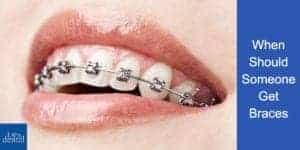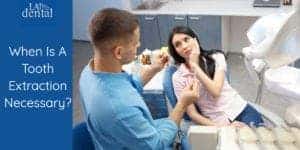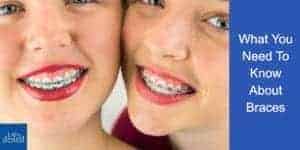Misaligned and crooked teeth have been extremely common. We’ve all seen someone who would wear braces as a child or even in adulthood in order to straighten their teeth. What’s interesting is how much work these seemingly dormant and innocuous objects are actually doing on your teeth to correct their shape and alignment.
We’ve talked about traditional braces before, but we haven’t really explored the parts of braces and how they work together to help improve your smile, so let’s change that.
Brackets
This is the main and most visible part of braces. This metal part is bonded to the teeth using an adhesive material which keeps them firmly in place throughout the course of the treatment.
Arch Wire
This is a thin metal wire which is placed over the brackets. The function of the arch wire is to put pressure onto the brackets and give them direction. This is what guides the teeth to become aligned and straight.
O-Rings
Also known as ligature elastics these look like plastic rubber bands which are attached over the brackets. These are changed every time braces are tightened and are available in a variety of colors allowing you to have a colorful smile.
Elastics
These are used in case a patient has an overbite or an under bite. Other than the arch wire these elastics provide added pressure over the teeth in order to straighten them. They build additional tension in the teeth which guides the teeth and jaw into the required position.
What They Do
The arch wire and elastic create a combination of pressure over the teeth and loosen them over the course of the treatment. The teeth will then move in the direction as guided by the pressure causing the membrane to expand on one side of the teeth and constrict on the other.
This expansion and constriction will ultimately result in the loosening of teeth from the gum line this movement will be a little more pronounced in the early stages of the treatment but gradually reduce over time as the teeth arrive at the desired position. The new position of the tooth will be naturally supported by the growth of the bone around the membrane.
After the Procedure
Once the braces have been removed after alignment the dentist will prescribe the use of a retainer which is the final step in the treatment. This is usually worn 24 hours a day and is used to support the teeth as the bone around them grows stronger. The retainer is worn until the bone can support the teeth on their own.
This is a highly delicate procedure which must be applied with expertise. Sudden procedures and changes in alignment could cause the patient to lose their teeth. At a younger age they must be worn for 1 to 3 years to straighten teeth.
There are however many facilities that provide treatment over a shorter duration. Make sure to opt for a highly qualified and experienced dentist when considering braces.
Get Started with a Consultation
Getting braces can be a little difficult in adulthood when you are a little more self conscious about your image. But while there are pros and cons to choosing braces over other options, there’s no downside to having a straighter, healthier smile.
This is why it’s preferred to opt for a quicker procedure by experienced professionals such as the 6 month braces program. Come and visit our practice for a consultation to find out the best way to take to care of your smile.




